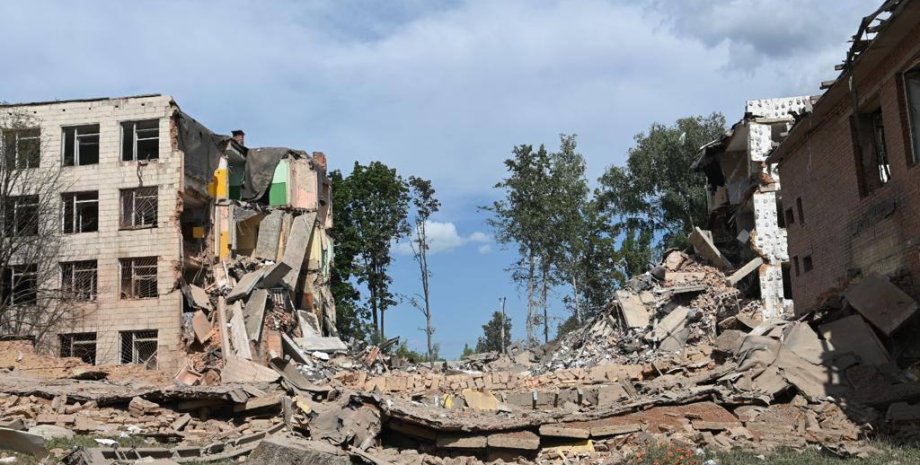
 By Natali Moss
By Natali Moss
All objects provide the Russian army with fuel and lubricants and are located more than 1,000 kilometers from the border with Ukraine. The first arrival was on the night of January 18 on the St. Petersburg oil terminal. In the General Directorate of Intelligence, the Ministry of Defense argued that Drons-Kamikadze could be launched in Russia, but "it is not for sure. " And the head of the mineral service Alexander Kamyshyn said that the UAV flew 1250 kilometers and hit the target.
The defeat of strategic goals in Russia continued the next day, January 19. The oil depot was not lucky in the territory of the city of Klinka, Bryansk region. The Russians had to find 13 fire trucks to eliminate fire. The blow to this object complicated the logistics of the invaders, the Ukrainian side said. On the night of January 21, due to the attack of drones on the Marine Terminal in Ust-Luz of the Leningrad region, the Novatek fuel plant closed.
The plant was recycled for the Armed Forces of the Russian Federation. Two powerful explosions heard in Tuapse on January 25, this is a city in the Krasnodar Territory and a large port on the Black Sea coast. The Tupsinsky Refinery became the next purpose of the Security Service of Ukraine. The arrival of the terminal in Ust-Luz, a key export terminal for the Baltic countries, has a great effect on raw oil supplies from Russia.
The volume of deliveries has fallen to the lowest level in almost two months, writes Bloomberg. Four weeks before January 21, 2024, about 3. 36 million barrels of raw oil were shipped from Russian ports a day. This is 50,000 barrels less than the period up to January 14. Oil exports are the main source of budget revenues, which covers the costs of a full -scale war in Ukraine. In parallel with the blows of the drones, the Russian "Naftyanka" suffers from the oil embargo of the European Union.
Moscow will lose more than $ 22 billion a year from oil exports to Europe, but will receive up to $ 10 billion from deliveries to Hungary, Slovakia and the Czech Republic Druzhba oil pipeline, predicts Bloomberg. Oil gas and diesel are the blood of the army that allows Russian tanks to move, and planes and helicopters - to fly.
If Russia feels a lack of fuel, it is possible to count on reducing the intensification of hostilities, the military expert, the former speaker of the General Staff of the Armed Forces of Ukraine Vladislav Seleznev, emphasizes in a conversation with focus. Ukraine's defense forces act effectively: they beat on critical objects for the Armed Forces of the Russian Federation, which provide their combat capabilities.
The more attacks of fuel terminals, the more resources of the Armed Forces are destroyed. It is extremely difficult to protect them from drones: you will not put air defense. The Russians have a fairly branched oil depot network, so there is something to work on. No wonder the Russian Federation is called a gas station. According to Seleznov, the plans of military command in Kiev to produce more than a million drones are made in the logic of lesions of objects in the Russian Federation.
Problems with fuel and lubricants in Russia's troops earlier occurred only after the strikes of the Defense Forces of Ukraine in warehouses in temporarily occupied territories. It is much more important to strike deep into Russia so that not only stocks, but also companies that produce and accumulate fuel. The Armed Forces of the Armed Forces are able to overcome the distance of more than 1000 kilometers. The drones have learned to circumvent air defense and strike any objects.
"A tank or armored vehicle without fuel will not go. And the truck will not bring ammunition for artillery to the front. Everything is interrelated, but so far Ukrainian opportunities for massive UAV attacks are limited. Everything is done point and jewelry, with operational pauses. To suffer, " - explains the focus coordinator of the group" Information resistance ", military expert Alexander Kovalenko.
A comprehensive approach to the destruction of the enemy's military infrastructure involves not only fuel bases but also military units. These include personnel dislocation, armored vehicles, weapons and ammunition warehouses, as well as management and communication points. It is important to affect the enterprises of the Russian OPC, large logistics hubs and energy objects.
It is necessary to destroy enterprises that produce important elements for Russian missiles, such as X-47 "dagger" or "caliber", says Vladislav Seleznev. "As part of a military campaign for 2024, the Armed Forces will focus on these purposes. Western partners will provide appropriate technologies," - summed up a military expert. We will remind, in the Russian city of Orel on January 9 drones attacked the fuel and energy complex for the third time.










All rights reserved IN-Ukraine.info - 2022